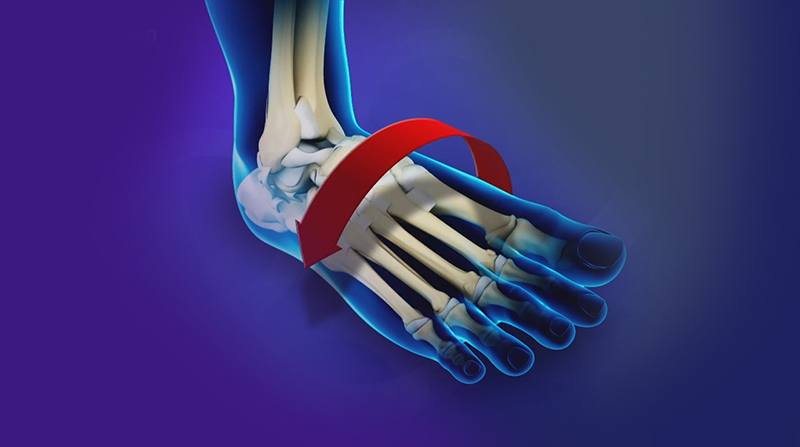
The Orthopedic Center of Palm Beach County provides a variety of treatments for pain of all types. OCPBC will restore your active lifestyle in an efficient and safe manner. Our doctors specialize in the use of the most current evidence-based techniques available.
One of the most common problems patients have is sprained ankle pain. Conservative care like rest and elevating your foot can help reduce the pain. But, sometimes it can be more serious than that. Chronic lateral ankle instability can occur if the injury is far more serious.
What is Chronic Lateral Ankle Instability?
Chronic lateral ankle instability is caused by inversion and plantarflexion. This means the ankle was inverted and pointed in an extreme way causing a tear in the ligaments. The injured ligaments are the anterior talofibular ligament followed by the calcaneofibular ligament.
Common reasons for chronic lateral ankle instability are an injury to the nerves that go through the ankle. The nerves may be stretched, torn, or injured by trauma. Arthritis of the ankle joint can play a key role in ankle instability. Also, previous fractures or injuries that developed scar tissue around the ankle can be a factor.
Common side effects of chronic lateral ankle instability are:
- Pain on the outer side of the ankle
- Difficulty walking on uneven ground or in high heels
- A feeling of ankle(s) giving way
- Swelling
- Stiffness
- Tenderness
- Repeated ankle sprains
20% of patients with a sprained ankle develop chronic lateral ankle instability even after conservative care. This issue then requires surgical intervention.
Case Study Procedure
Our very own Dr. Clancy was involved in a case study involving chronic lateral ankle instability. The most common procedure is an open repair of the anterior talofibular and calcaneofibular ligaments.
The case study featured 112 cases. Each reported chronic lateral ankle instability even after conservative care. MRIs were done to confirm the diagnosis and one doctor reviewed the results. Similar surgical techniques were done to all patients ensure uniformity.
The patients were followed from six weeks to two years. The first two weeks, the patient had to wear a non-weight-bearing splint. At the third week, patients can wear a weight-bearing boot. At two weeks, the patient is enrolled to do physical therapy to gain strength back in the ankle.
We will report back when the results are final!

Dr. James T. Clancy, D.P.M.
Dr. Clancy is Board Certified by the American Board of Foot & Ankle Surgery. Dr. Clancy earned his podiatric medical degree from Temple University. He then completed his residency at The Maryland Podiatric Surgical Residency Program at Johns Hopkins Hospital.
Dr. Clancy is trained on the latest advances in nerve repair and on the newest FDA-approved total ankle joint replacement. He is also golf medicine expert. He is certified by the Titleist Performance Institute — the world’s leading research facility dedicated to the study of how the human body functions in relation to the golf swing.
Don’t Be in Pain. Contact the Orthopedic Center of Palm Beach County
Do you want to learn more about what OCPBC can do to alleviate your pain?
Please give us a call today at (561)967-6500 for more information about how we can serve you or schedule an appointment at one of our three locations throughout Palm Beach County.





